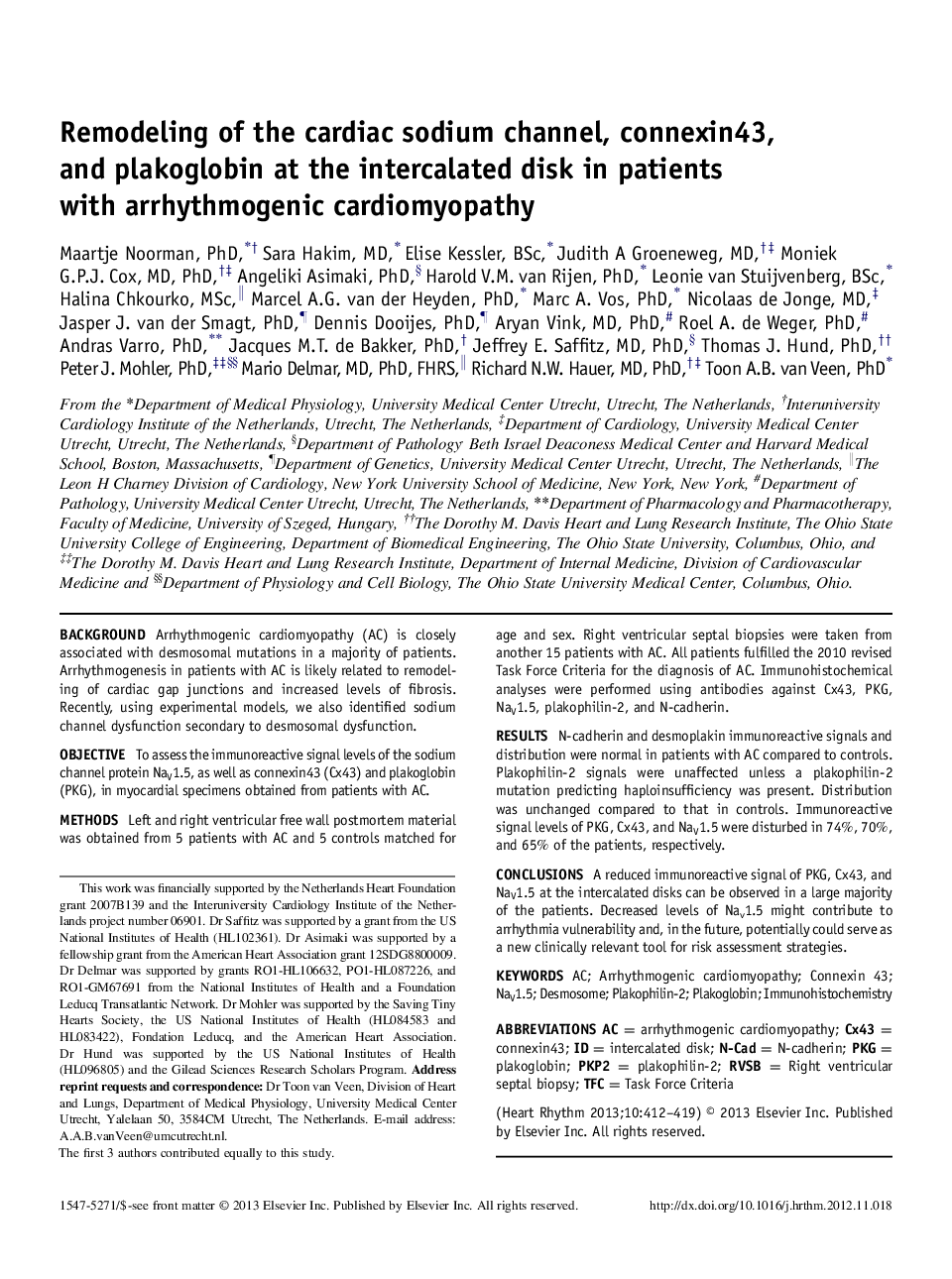| کد مقاله | کد نشریه | سال انتشار | مقاله انگلیسی | نسخه تمام متن |
|---|---|---|---|---|
| 2922239 | 1175838 | 2013 | 8 صفحه PDF | دانلود رایگان |

BackgroundArrhythmogenic cardiomyopathy (AC) is closely associated with desmosomal mutations in a majority of patients. Arrhythmogenesis in patients with AC is likely related to remodeling of cardiac gap junctions and increased levels of fibrosis. Recently, using experimental models, we also identified sodium channel dysfunction secondary to desmosomal dysfunction.ObjectiveTo assess the immunoreactive signal levels of the sodium channel protein NaV1.5, as well as connexin43 (Cx43) and plakoglobin (PKG), in myocardial specimens obtained from patients with AC.MethodsLeft and right ventricular free wall postmortem material was obtained from 5 patients with AC and 5 controls matched for age and sex. Right ventricular septal biopsies were taken from another 15 patients with AC. All patients fulfilled the 2010 revised Task Force Criteria for the diagnosis of AC. Immunohistochemical analyses were performed using antibodies against Cx43, PKG, NaV1.5, plakophilin-2, and N-cadherin.ResultsN-cadherin and desmoplakin immunoreactive signals and distribution were normal in patients with AC compared to controls. Plakophilin-2 signals were unaffected unless a plakophilin-2 mutation predicting haploinsufficiency was present. Distribution was unchanged compared to that in controls. Immunoreactive signal levels of PKG, Cx43, and NaV1.5 were disturbed in 74%, 70%, and 65% of the patients, respectively.ConclusionsA reduced immunoreactive signal of PKG, Cx43, and NaV1.5 at the intercalated disks can be observed in a large majority of the patients. Decreased levels of Nav1.5 might contribute to arrhythmia vulnerability and, in the future, potentially could serve as a new clinically relevant tool for risk assessment strategies.
Journal: Heart Rhythm - Volume 10, Issue 3, March 2013, Pages 412–419